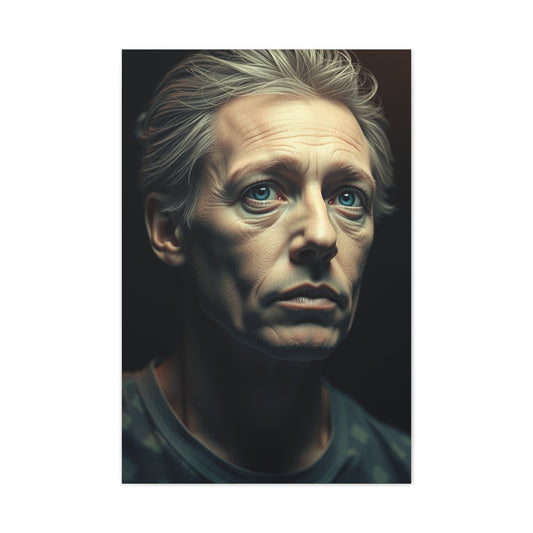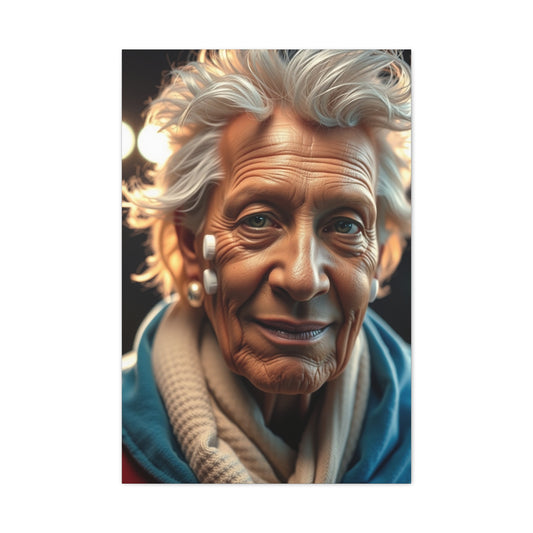Capturing matrimonial celebrations represents one of photography's most demanding and unforgiving disciplines, where second chances remain nonexistent and perfection becomes mandatory. The responsibility weighs heavily upon photographers' shoulders, as these visual narratives will serve as treasured heirlooms passed through generations of family members. Unlike other photographic genres where reshoot opportunities exist, wedding documentation demands flawless execution from initial preparation through final delivery.
The emotional significance attached to matrimonial imagery creates immense pressure that extends far beyond technical proficiency. Every captured moment becomes part of an irreplaceable historical record documenting one of life's most pivotal celebrations. Couples invest tremendous faith in their chosen photographer, entrusting them with preserving memories that will evoke powerful emotions decades into the future.
Professional wedding photographers understand that their craft extends beyond mere image creation into the realm of storytelling and memory preservation. Each photograph must contribute to a comprehensive visual narrative that authentically represents the couple's unique celebration while meeting their specific aesthetic preferences and cultural requirements.
The stakes become particularly elevated for novice photographers entering this specialized field, where learning curves must be navigated without compromising client satisfaction. Success requires meticulous preparation, comprehensive planning, and unwavering attention to detail throughout every phase of the matrimonial celebration.
Developing expertise in wedding documentation necessitates understanding that mistakes carry consequences extending far beyond professional reputation. Poor execution can potentially damage irreplaceable moments, creating emotional distress for couples and their families while undermining the photographer's credibility within this competitive industry.
Establishing Meaningful Client Relationships Through Initial Consultations
Building meaningful relationships with matrimonial clients starts with the consultation process. This first interaction serves as a gateway for understanding the couple’s unique vision, preferences, and expectations regarding their wedding day photography. The initial consultation is not only a chance to discuss logistical details but also a vital opportunity to get a sense of the couple's personalities, relationship dynamics, and aesthetic sensibilities. When done correctly, it can set the tone for a seamless and positive collaboration that leads to exceptional results.
The value of a thorough consultation goes far beyond simply discussing photography packages and prices. It is the foundation of a long-lasting partnership where trust and understanding are built, making it an essential step in the overall wedding planning process. By investing time in the initial meeting, photographers can avoid misunderstandings and ensure that the couple’s vision is fully realized through the images captured.
Understanding the Couple’s Vision and Preferences
An effective consultation begins with getting to know the couple on a deeper level. Every couple has their own distinct story, preferences, and ideas about how they want their wedding day captured. A key part of the discussion should focus on understanding their vision for the day. This includes exploring their desired photographic style, whether they lean towards traditional portraits or prefer a more modern, artistic approach. It’s also essential to discuss any must-have moments—specific shots or events that are particularly meaningful to them.
Couples often have strong preferences regarding the style of photography, whether it’s posed or candid, formal or documentary-style. Some may favor classic, traditional compositions that emphasize timeless elegance, while others may prefer contemporary interpretations that highlight creativity and spontaneity. Knowing these preferences in advance allows the photographer to adjust their approach, ensuring that the final product aligns with the couple’s expectations and desires.
Additionally, it’s important to understand whether the couple has any specific requests, such as particular family members or friends they want to highlight, or moments they want captured in a specific way. These detailed discussions are instrumental in creating a comprehensive shot list that serves as the blueprint for the entire wedding day.
The Role of Cultural Sensitivity in Matrimonial Photography
Cultural backgrounds and religious traditions play a significant role in wedding celebrations. Matrimonial ceremonies around the world vary greatly in terms of rituals, customs, and traditions, and understanding these nuances is crucial for wedding photographers. Certain cultures place emphasis on specific ceremonial elements, such as religious rites, family blessings, or symbolic gestures, which must be captured with respect and accuracy.
During the consultation, photographers should take the time to ask couples about any cultural or religious practices that will be part of their wedding day. For instance, Hindu weddings involve a series of sacred rituals, including the exchange of garlands and the lighting of the sacred fire, while Christian weddings typically feature vows and blessings exchanged at the altar. By gaining insight into the couple’s cultural and religious expectations, the photographer can prepare to document these traditions in a way that honors their significance and resonates with the couple and their families.
In addition to understanding the ceremonies, photographers should also be open to learning about the couple’s personal preferences related to their heritage. For example, some couples may wish to incorporate family heirlooms, traditional attire, or significant cultural symbols into their wedding day photographs. These details are often the heart of the celebration, and capturing them with care and attention to detail can result in images that are not only beautiful but also deeply meaningful.
Budget Considerations and Service Transparency
Budget discussions are an inevitable part of the consultation process, and they need to be handled with transparency and professionalism. A clear understanding of the couple’s budget helps ensure that both the photographer and the clients are on the same page regarding the services to be provided and the pricing structure. Weddings can be expensive, and couples are often juggling multiple priorities, so it’s important for photographers to offer packages that fit within their budget while still delivering exceptional quality.
Transparent communication about pricing is essential to prevent misunderstandings down the line. Photographers should go over what is included in the package—whether it covers a full-day wedding shoot, pre-wedding engagements, travel fees, or post-production editing. Additionally, any potential extra costs, such as travel expenses for destination weddings, additional prints, or albums, should be discussed early on. This clarity fosters trust and ensures that the couple is fully informed about the financial aspects of their wedding photography.
It’s also important for photographers to tailor their offerings to accommodate the couple’s needs and expectations. Some couples may prioritize having a second photographer to capture multiple angles, while others may value having extra time for pre-ceremony portraits. By discussing these preferences early, photographers can create a customized experience that meets both the couple's expectations and their financial limitations.
Timeline Coordination for Seamless Event Coverage
A successful wedding shoot requires meticulous planning, and one of the most critical aspects of this planning is timeline coordination. Understanding the complete schedule of events is essential for photographers to capture key moments while ensuring they are positioned appropriately throughout the day. From pre-ceremony preparations to the post-reception festivities, every moment of the wedding day is important.
During the initial consultation, photographers should ask the couple for a detailed timeline, outlining when the bride and groom will be getting ready, the ceremony start time, reception events, and any special moments like speeches, first dances, or cake cutting. Knowing the exact timings helps photographers plan their movements, ensuring that they are present at the right moment to capture important milestones without feeling rushed.
Additionally, flexibility in scheduling is crucial, as weddings are often subject to delays or unforeseen changes. A photographer who has worked with a variety of couples will be prepared for adjustments and can adjust their shooting plan accordingly. Being able to work within the couple’s timeline while remaining adaptable to changes is a key trait that helps build trust and satisfaction with clients.
Building Personal Chemistry for a Successful Collaboration
While technical skill and preparation are crucial to wedding photography, the personal chemistry between the photographer and the couple is just as important. Establishing a rapport early on helps foster trust and makes the couple feel comfortable in front of the camera, leading to more authentic and natural photos. A couple that feels at ease with their photographer will be more relaxed during posed portraits and more likely to express genuine emotions during candid moments.
The consultation meeting is the first opportunity to establish this connection. Photographers should take the time to get to know the couple on a personal level, asking about their relationship, how they met, and what they envision for their wedding day. Showing genuine interest in their story and personalities helps create a bond, allowing the photographer to capture not just images, but the emotions and nuances that make the couple’s relationship unique.
By taking the time to build a positive, comfortable working relationship, photographers can ensure that the couple feels confident in their ability to document one of the most important days of their lives. This sense of comfort is crucial in producing photos that are both authentic and emotionally impactful.
Developing Comprehensive Guest Documentation Strategies
Matrimonial celebrations often bring together a vast array of family members and friends from diverse backgrounds, creating a complex web of relationships and social dynamics. As a photographer, capturing the essence of these interactions requires a keen understanding of the guest list, family structures, and interpersonal dynamics. A successful documentation strategy goes beyond just snapping photos; it involves navigating through these relationships with sensitivity and professionalism. By paying attention to the nuances of these dynamics, photographers can capture not only beautiful portraits but also the emotions and connections that make a wedding unique.
The primary goal in documenting a wedding is to ensure that every important moment and individual is appropriately highlighted. This requires a well-thought-out plan that takes into account the unique relationship structures of the couple’s families and friends. Understanding who is who, their significance in the couple's life, and the underlying relationships between guests is essential in ensuring that the wedding photography is both comprehensive and emotionally resonant.
Guest List Creation: Prioritizing Significant Individuals
One of the most critical aspects of wedding photography is creating a detailed guest list. This list should go beyond simply listing names and addresses; it should include descriptions of each guest’s relationship to the couple. A well-organized guest list allows photographers to prioritize certain individuals for individual or group portraits and helps avoid the risk of leaving out significant people during the celebration.
The guest list should clearly identify the immediate family members, such as parents, siblings, and grandparents, as well as extended relatives like aunts, uncles, and cousins. The wedding party members, including bridesmaids, groomsmen, flower girls, and ring bearers, should also be noted for special attention. Close friends and important mentors—such as childhood friends, teachers, or colleagues—deserve particular focus due to their emotional significance to the couple.
Once this list is established, the photographer can plan their approach to the day’s photo sessions, ensuring that all critical individuals are accounted for. This also allows photographers to manage their time effectively, making sure that each person and group gets the appropriate amount of attention during the ceremony, reception, and other parts of the wedding day.
Understanding Family Dynamics and Social Hierarchies
A successful photographer must navigate the intricate social dynamics that often exist at wedding celebrations. Family structures can vary widely from one couple to another, and it is essential for photographers to understand how these structures might impact the event. For example, divorced parents or estranged relatives may have unresolved tensions that need to be addressed with sensitivity during photo sessions. Understanding these dynamics is key to creating a harmonious atmosphere where everyone feels comfortable and included.
Family conflicts, such as past divorces or strained relationships, may pose challenges during group photos, where certain individuals may feel uncomfortable being in close proximity to one another. In such situations, photographers must handle the dynamics with tact and professionalism, carefully managing the logistics of photo sessions to avoid any uncomfortable interactions. They should also know when to step in diplomatically to suggest different arrangements that allow all family members to be included without causing stress or awkwardness.
Navigating these situations with care helps ensure that no one feels excluded or uncomfortable during the wedding photography process. Photographers must be proactive in addressing any concerns and be willing to adjust their plans as necessary to ensure that all individuals involved in the wedding feel respected and included in the documentation process.
Key Guests and VIPs: Capturing Special Relationships
Weddings often feature VIP guests—individuals who hold significant meaning in the lives of the bride and groom. These special guests deserve special attention and priority during the photography process. While family members and wedding party members will naturally be at the forefront of the photographer’s focus, other VIPs such as godparents, childhood friends, mentors, and even long-lost relatives should not be overlooked.
Identifying these individuals early on during the consultation and on the wedding day itself helps photographers plan for specific interactions that should be captured. Special moments, such as a bride’s first look at her godparents or a groom's heartfelt exchange with his childhood best friend, should be documented to preserve the emotional depth of the celebration. These moments, often more intimate than those involving the larger wedding party, add a personal touch to the final photo collection.
Photographers should make sure to be aware of any particular relationship dynamics between the couple and these VIP guests. For example, a godparent may play a special role in the couple's spiritual or emotional life, and the photographer should be aware of the significance of this relationship to capture it effectively. Similarly, childhood friends may have a deep connection with the couple that should be highlighted during group photos or candid shots throughout the day.
Cultural Considerations in Guest Interaction and Photography
Cultural sensitivity plays an enormous role in capturing a wedding celebration. Different cultures have varying traditions, ceremonies, and expectations regarding how weddings are celebrated, and understanding these cultural nuances is crucial for creating a respectful and effective documentation strategy. From religious ceremonies to regional customs, cultural considerations influence how guests interact with each other and how specific moments are captured.
In some cultures, for instance, there may be specific rituals or ceremonies that hold profound significance and must be respected by the photographer. Certain moments, such as religious prayers, blessings, or rites of passage, may require particular attention to detail, so it’s essential for photographers to be familiar with these customs ahead of time. This could involve understanding traditional dress codes, seating arrangements, or even specific ways of addressing elders or community leaders.
Additionally, some cultures may have distinct preferences for how their images should be documented. For example, certain guests may feel uncomfortable with too much candid photography, preferring formal portraits instead. By being sensitive to these preferences, photographers can avoid potential cultural faux pas and create a photography plan that respects the couple’s heritage while still capturing all the memorable moments.
Effective Communication with Family Liaisons and Guest Coordinators
Communication is one of the key pillars of a successful wedding photography strategy. Working with family liaisons or guest coordinators is an effective way to streamline the logistics of the photography process. These designated individuals, often family members or friends, serve as valuable points of contact for managing guests, helping to ensure that key people are available when needed and that group photos are executed smoothly.
Guest coordinators often have a deeper understanding of the family’s relationship dynamics and can help photographers navigate any challenges. They can also assist with directing people to specific photo locations, ensuring that the photographer has the appropriate subjects in place at the right times. For example, during large group shots or during the formal reception portraits, the guest coordinator can facilitate smooth transitions and keep everything on schedule, reducing stress for both the couple and the photographer.
Additionally, these liaisons can provide helpful context for the photographer, offering insights into family relationships or personal dynamics that could impact how certain groupings should be handled. This level of collaboration improves the overall efficiency of the photography process and ensures that each guest and family member is represented appropriately.
Efficient Workflow and Time Management for Guest Photography
Weddings are fast-paced events, and time management is essential to ensure that the photographer can cover all the necessary moments and guests. Effective workflow involves meticulous planning, especially when dealing with large numbers of guests and a tight schedule. From pre-ceremony preparations to post-ceremony celebrations, the photographer must anticipate when and where certain group photos will be taken.
Planning ahead and being mindful of the event timeline helps photographers maximize their time and capture all the important moments. This includes allocating time for individual portraits, couple shots, family groupings, and candid moments. In a large wedding, certain moments like the first dance or cake cutting may require the photographer to focus entirely on the couple, while other times, they need to pay attention to the guests’ reactions and interactions.
Effective communication with the couple, their families, and other vendors (such as the wedding planner or guest coordinators) is vital in maintaining an efficient workflow. Having a detailed schedule allows the photographer to stay on track and ensure that no significant moment or important guest is missed. Flexibility is also key—being able to adjust on the fly in case of unforeseen delays or changes ensures that the photographer is always in the right place at the right time.
Comprehensive Location Reconnaissance and Environmental Assessment
Professional matrimonial photography success depends heavily upon thorough location familiarity and strategic positioning preparation. Advance reconnaissance visits provide crucial insights into lighting conditions, architectural features, spatial limitations, and photographic opportunities that influence shot planning and equipment requirements.
Detailed location surveys should encompass multiple time periods to understand natural lighting variations throughout typical celebration schedules. Morning preparations often occur in different lighting conditions compared to afternoon ceremonies or evening receptions, requiring photographers to plan equipment and positioning accordingly.
Architectural features and decorative elements within venues provide contextual backgrounds and compositional opportunities that enhance matrimonial imagery. Identifying these features during reconnaissance visits enables photographers to incorporate venue characteristics into their visual storytelling approach.
Traffic flow patterns and guest movement logistics significantly impact photographer positioning and mobility during various celebration phases. Understanding these patterns prevents interference with ceremonial proceedings while ensuring optimal vantage points for crucial moments.
Backup location identification becomes essential when weather conditions or unexpected circumstances require alternative shooting venues. Indoor alternatives for outdoor ceremonies, covered areas for inclement weather, and secondary portrait locations provide contingency options that maintain photography schedules despite environmental challenges.
Venue restrictions regarding photography equipment, flash usage, or photographer positioning require advance clarification to prevent conflicts during celebrations. Religious institutions and historic venues often impose specific limitations that influence equipment selection and shooting strategies.
Technical considerations including electrical outlet availability, equipment storage options, and transportation logistics require advance planning to ensure smooth photography operations throughout extended celebration periods.
Advanced Preparation Techniques for Matrimonial Photography Excellence
Systematic preparation protocols distinguish professional wedding photographers from amateur practitioners, ensuring consistent results regardless of unexpected circumstances or challenging conditions. Comprehensive preparation encompasses technical readiness, creative planning, and contingency development that addresses potential complications before they arise.
Equipment preparation involves thorough testing and calibration of all photographic gear well in advance of celebration dates. Camera bodies, lenses, lighting equipment, and accessories require complete functionality verification to prevent technical failures during crucial moments.
Creative preparation includes developing shot lists, identifying unique angles, and planning artistic compositions that reflect each couple's personality and style preferences. Pre-visualization exercises help photographers anticipate opportunities while maintaining flexibility for spontaneous moments.
Timeline coordination with wedding planners, venue coordinators, and other vendors ensures seamless integration of photography activities with overall celebration logistics. Clear communication prevents scheduling conflicts while optimizing photography opportunities within compressed timeframes.
Assistant preparation becomes valuable when budget permits second photographers or photography assistants. These team members require briefing on specific roles, backup responsibilities, and communication protocols that enhance overall coverage while reducing primary photographer stress levels.
Weather contingency planning addresses potential environmental challenges that could disrupt outdoor photography sessions. Alternative locations, equipment modifications, and creative adaptations transform potentially problematic conditions into unique artistic opportunities.
Creating Systematic Photography Documentation Checklists
Comprehensive photography checklists serve as essential organizational tools that prevent oversight of crucial moments and ensure complete coverage of matrimonial celebrations. These detailed lists accommodate diverse ceremony types while maintaining flexibility for spontaneous opportunities that enhance storytelling authenticity.
Pre-ceremony documentation encompasses preparation activities including bridal preparations, groom preparations, detail shots of rings and accessories, venue decoration photography, and guest arrival documentation. These preliminary images establish narrative context while capturing emotional anticipation preceding formal ceremonies.
Ceremonial coverage requires systematic attention to processional entries, exchanged vows, ring ceremonies, unity rituals, ceremonial kisses, and recessional exits. Each element contributes to comprehensive story documentation while preserving emotional peak moments.
Reception documentation includes venue transitions, cocktail hour interactions, formal introductions, first dances, parent dances, cake cutting ceremonies, toasts, and dancing celebrations. These activities represent diverse photographic opportunities requiring different technical approaches and creative perspectives.
Detail photography encompasses floral arrangements, table settings, wedding cakes, invitation suites, transportation vehicles, and architectural venue features. These supplementary images provide contextual richness while showcasing celebration aesthetics and planning details.
Candid moment identification involves recognizing spontaneous emotional expressions, guest interactions, children's activities, and behind-the-scenes moments that add authenticity to formal documentation. These unscripted captures often become clients' most treasured photographs.
Family portrait requirements necessitate systematic organization of various family groupings, generational combinations, and friendship circles. Efficient execution of these formal portraits requires advance planning and clear communication with family coordinators.
Weather Contingency Planning and Environmental Adaptations
Meteorological unpredictability presents significant challenges for matrimonial photographers, requiring comprehensive contingency planning that transforms potential disasters into creative opportunities. Professional preparation addresses various weather scenarios while maintaining flexibility for last-minute adaptations.
Rainfall contingencies involve identifying covered locations, waterproof equipment protection, and creative utilization of precipitation effects for dramatic imagery. Umbrellas become both practical necessities and stylistic props that add visual interest while protecting subjects and equipment.
Dramatic sky conditions created by approaching storms or clearing weather provide exceptional photographic opportunities for experienced photographers willing to embrace environmental challenges. Strategic positioning and timing can produce spectacular imagery that exceeds clear weather alternatives.
Wind considerations affect bridal gown positioning, floral arrangement stability, and equipment security during outdoor sessions. Understanding wind patterns and protective positioning helps maintain elegant presentations while preventing wardrobe malfunctions or equipment damage.
Temperature extremes require considerations for subject comfort, equipment performance, and wardrobe appropriateness. Cold weather affects battery life and subject endurance, while excessive heat creates comfort challenges and potential equipment overheating issues.
Alternative venue identification provides backup options when primary outdoor locations become unusable due to weather conditions. Indoor alternatives, covered pavilions, and architectural features offer protected environments that maintain photography schedules despite environmental challenges.
Equipment modifications for adverse weather include waterproof housing, lens protection, and specialized accessories that enable continued operation despite challenging conditions. Professional photographers invest in weather-resistant gear that expands their operational capabilities.
Essential Equipment Management and Technical Preparedness
Professional matrimonial photography demands comprehensive equipment arsenals that address diverse technical requirements throughout extended celebration periods. Equipment selection, maintenance, and backup planning prevent technical failures that could compromise irreplaceable documentation opportunities.
Camera body requirements emphasize reliability, low-light performance, and rapid response capabilities essential for capturing fleeting moments in challenging conditions. Professional-grade cameras provide necessary technical specifications while withstanding intensive use throughout long celebration days.
Lens selection encompasses versatile focal length ranges accommodating intimate portraits, group photography, architectural documentation, and detail capture requirements. Prime lenses offer superior optical quality for critical shots, while zoom lenses provide operational flexibility during dynamic situations.
Lighting equipment including external flashes, diffusion modifiers, and battery power systems enable consistent illumination regardless of venue conditions. Professional lighting control becomes particularly crucial during indoor ceremonies and evening receptions where ambient lighting proves insufficient.
Storage solutions encompass high-capacity memory cards, real-time backup systems, and portable storage devices that prevent data loss while providing immediate backup redundancy. Professional workflows prioritize data security throughout entire photography processes.
Power management systems including spare batteries, charging stations, and portable power sources ensure uninterrupted operation throughout extended celebration periods. Battery life considerations become critical when shooting schedules exceed normal operational timeframes.
Transportation and protection systems safeguard valuable equipment while providing organized access during rapidly changing photography situations. Professional camera bags and cases facilitate efficient equipment management while protecting expensive gear from damage.
Backup equipment redundancy addresses potential failures of critical components during celebrations where replacement opportunities remain nonexistent. Secondary cameras, alternative lenses, and duplicate accessories provide security against equipment failures that could compromise coverage.
Professional Workflow Integration and Industry Standards
Establishing professional workflows and adhering to industry standards distinguishes competent wedding photographers from amateur practitioners while building sustainable business foundations. Professional development encompasses technical proficiency, business acumen, and ethical considerations that define industry leadership.
Apprenticeship opportunities through second photographer positions provide invaluable experience while reducing risks associated with primary responsibility for crucial celebrations. Learning alongside experienced professionals accelerates skill development while building industry networks and referral relationships.
Client communication protocols establish clear expectations regarding services, deliverables, timeline requirements, and professional boundaries. Written contracts protect both photographers and clients while ensuring mutual understanding of responsibilities and limitations.
Post-production workflows encompass image selection, editing processes, delivery methods, and archival procedures that maintain professional standards while meeting client expectations. Efficient post-production systems enable timely delivery without compromising quality standards.
Continuous education through workshops, seminars, and professional associations keeps photographers current with evolving techniques, technologies, and industry trends. Professional development investments enhance technical capabilities while maintaining competitive positioning.
Insurance considerations including equipment coverage, liability protection, and professional indemnity insurance provide essential business protections. Professional photographers face significant financial risks that require comprehensive insurance planning and risk management strategies.
Ethical considerations encompass client confidentiality, image usage rights, cultural sensitivity, and professional conduct standards. Maintaining ethical standards builds reputation while preventing conflicts that could damage professional relationships and business sustainability.
Advanced Creative Techniques for Distinctive Wedding Documentation
Developing signature styles and creative approaches differentiates professional wedding photographers while providing couples with unique artistic interpretations of their celebrations. Creative excellence requires technical proficiency combined with artistic vision that produces memorable imagery transcending conventional documentation.
Compositional mastery encompasses understanding of visual elements including leading lines, framing techniques, symmetry applications, and rule-of-thirds implementations that create compelling imagery. Advanced composition skills elevate ordinary moments into extraordinary artistic expressions.
Lighting manipulation techniques including natural light optimization, artificial light enhancement, and mixed lighting balance create professional-quality imagery regardless of venue conditions. Master photographers understand light quality characteristics and modification techniques that enhance subject presentation.
Emotional capture requires developing sensitivity to human interactions, anticipating significant moments, and maintaining readiness for spontaneous expressions. The ability to recognize and capture authentic emotions distinguishes exceptional wedding photographers from technical practitioners.
Storytelling integration weaves individual photographs into cohesive narratives that comprehensively document celebration experiences while reflecting couple personalities and relationship dynamics. Effective storytelling creates emotional connections that enhance photograph value and client satisfaction.
Cultural integration involves understanding diverse traditions, religious customs, and family dynamics that influence matrimonial celebrations. Respectful documentation of cultural elements adds authenticity while honoring couple heritage and beliefs.
Post-production artistry encompasses editing techniques that enhance natural beauty while maintaining authentic representations. Professional editing skills transform good captures into exceptional imagery that exceeds client expectations and industry standards.
Through comprehensive preparation, systematic execution, and continuous professional development, novice wedding photographers can develop expertise necessary for successful matrimonial documentation while building sustainable careers in this demanding but rewarding photographic specialty.
Final Thoughts
Wedding photography stands apart as one of the most complex, emotionally charged, and technically demanding fields within the profession. For novice photographers, the journey into this specialty is both exhilarating and intimidating—marked by high stakes, rapid learning curves, and the immense responsibility of capturing moments that can never be recreated. Unlike other genres, weddings provide no second takes, no pauses, and no margin for significant error. Every click of the shutter carries the weight of preserving irreplaceable memories that will be treasured for generations.
Success in this realm depends on far more than technical skill with a camera. It is built upon a foundation of meticulous preparation, clear communication, cultural sensitivity, and an ability to anticipate and adapt to rapidly changing circumstances. The most skilled wedding photographers understand that they are not merely documenting an event; they are crafting a visual legacy. Each image must serve a purpose—whether it’s telling part of the couple’s love story, showcasing cultural traditions, or capturing fleeting, unguarded emotions.
For novices, developing confidence comes from preparation and practice. Pre-wedding consultations, shot lists, venue scouting, and equipment checks are not just recommended—they are essential. This groundwork ensures that when the pace of the wedding accelerates, you can move with it seamlessly, ready for both the expected and the unpredictable. Building rapport with couples and guests fosters natural, authentic photographs while reducing tension during formal portraits or sensitive moments.
Adaptability is equally vital. Timelines shift, weather changes, lighting fluctuates, and emotions run high. A photographer must remain calm, resourceful, and ready to adjust without disrupting the flow of the celebration. The ability to transition from structured group portraits to candid guest interactions, or from low-light ceremonies to fast-paced dance floor scenes, is what elevates a competent photographer into a trusted professional.
Moreover, success in wedding photography hinges on understanding people as much as understanding cameras. Navigating family dynamics, respecting cultural rituals, and honoring the personal significance of certain moments are as important as composing a beautiful frame. Emotional intelligence becomes a powerful tool—helping you anticipate when to step closer and when to remain unobtrusive.
Finally, post-production is where the day’s efforts are refined into a polished narrative. Editing must balance artistry with authenticity, ensuring that images remain true to the couple’s memories while presenting them in their best light. Delivering a carefully curated collection, on time and with professionalism, cements trust and builds reputation.
For novices willing to commit to preparation, empathy, adaptability, and continuous growth, wedding photography offers unparalleled rewards. It is the art of preserving love stories in their purest form—a responsibility as profound as it is fulfilling. In mastering this craft, you do more than take photographs; you create timeless legacies.




























